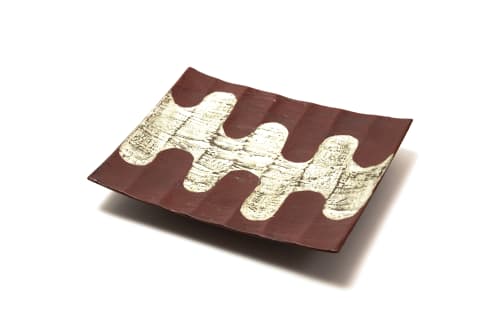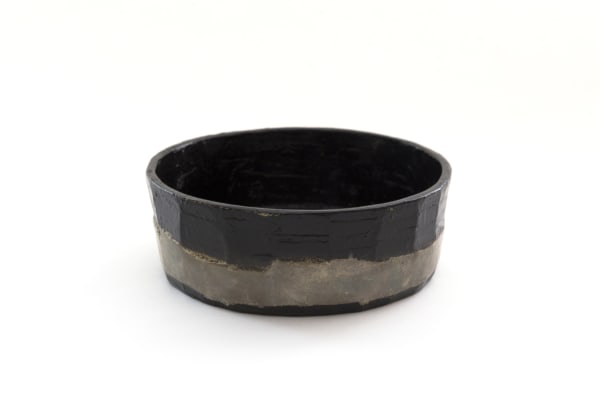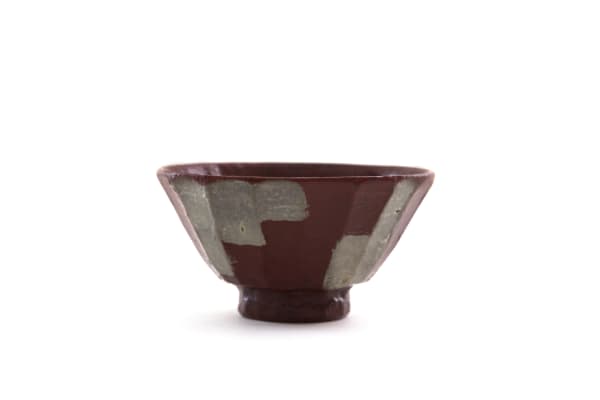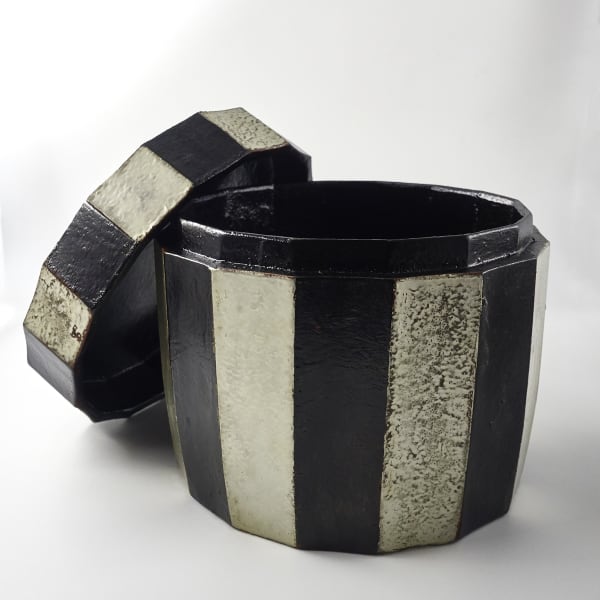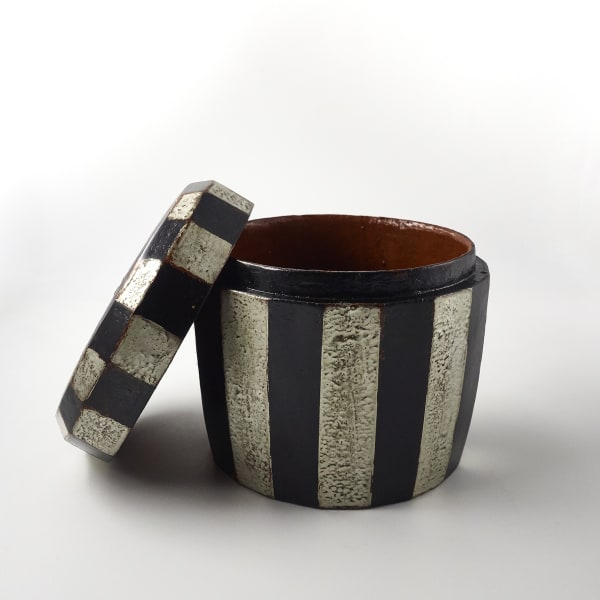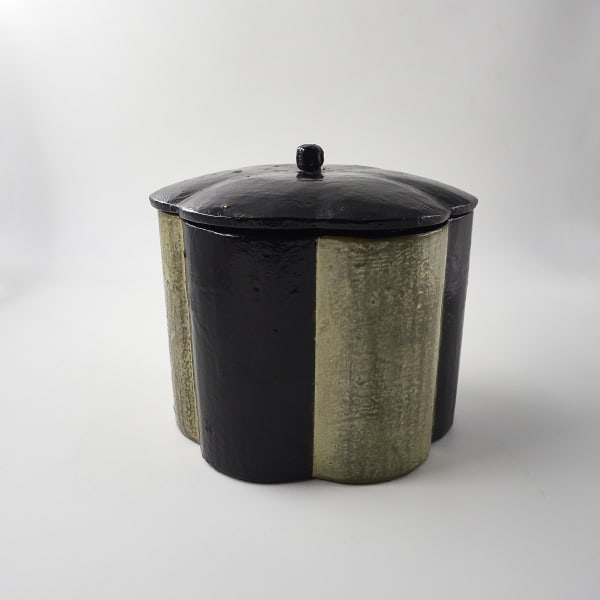Rinpa: Silver Waves: Lacquer works by Tohru Matsuzaki
Matsuzaki's studio is set among the quiet mountains of Motegi town in Tochigi Prefecture, which is situated next to the village of Mashiko where the potter, Shoji Hamada, one of the leaders of the mingei (folk-art) movement of the 1920s and 1930s, based his activities. In Mashiko, Matsuzaki studied under Tatsuzō Shimaoka (recognized as 'living national treasure' in 1996, died in 2007), learning the ideal sizes for vessels and realizing the profundity of ceramics. Following this, he did not study under a lacquer artist, but his love of wood led him to spend his time surrounded by wood shavings as he carved out his works before applying numerous coats of lacquer. In the beginning, he used thick blocks of zelkova wood, carving out picture frames that he then finished using a thick coat of vermillion lacquer. These caught the eye of the textile artist Keisuke Serizawa, who used them for his panel or glass paintings, which took the art world by storm forty years ago.
Although his work bears some similarities to Korean Joseon-dynasty or Negoro work, Matsuzaki's lacquerware is unique. His sculptural works capture the viewer's heart. Carved from single pieces of four- to five-hundred-year-old zelkova, horse chestnut, or chestnut timber that have been dried for more than twenty years, they do not warp. The beauty of the numerous black or vermillion lacquer coats awakens ancient memories of the Jōmon period that lie dormant within us. As Matsuzaki says, "Mankind has known the value of wood and lacquer for over ten thousand years, and I felt that I wanted to use these to make something in a present continuous form, something that could be used, but which would also be appreciated universally for its beauty."
Alternating between art and mingei, Matsuzaki has established his unique genre, recently adding to this with a new series of works incorporating silver in their decoration. The theme for this exhibition is 'aiming for the Rinpa' (Rinpa school: a significant Japanese art movement established in the 17th century). In addition to his black and vermillion works, it will also include some with silver designs that dance freely across wiped lacquer bases to add the element of painting to his oeuvre. We are delighted to hold simultaneous exhibitions of his work in both Tokyo and New York. We want to take this opportunity to offer our sincere thanks to Tohru Matsuzaki for his unstinting support, dating back to even before our gallery opened.
Shoko Aono
Ippodo Gallery is pleased to present its latest exhibition, “ Rinpa: Silver Waves”, a solo showcase of lacquer wares by Tohru Matsuzaki (b. 1944) will be on view for November 1 - November 21.
His deep understanding of Japanese artistry has flourished through a lifelong journey of vitality and self-discovery, leading to unique and inventive works which remain useful and subtle in design.
Tohru Matsuzaki lives and works in a beautiful gated residence in Motegi, just north of Tokyo. It is a stone’s throw from the renowned pottery center of Mashiko, where ceramic artist Shoji Hamada first cultivated the folk art movement Mingei in 1930. And so, past and future coexist in this quiet enclave, as our artist continues to create. Today, he is widely celebrated, and heads the Kougeibu (Craft Division) of the influential artists’ association Kokugakai.
Matsuzaki’s appreciation of form and function was fused by his unprecedented work ethic. Seemingly rough around the edges but equally familiar and kind, the artist’s sense of self is synonymous with the pieces on display. Although his father was a Nihonga painter, in 1974, Matsuzaki’s pursuit of lacquer study proved he was as fascinated by its significance in traditional Japanese culture as by its humble, functional origins--particularly Mingei, or folk art. As such, Matsuzaki’s experimentation remains exceptional, essentially creating his own genre.
At first, he worked solely in the natural tones of the red and clear lacquer on wood, only adding the matte-finished black lacquer to his portfolio. This stands apart from the typical works of the period, in what Asian art specialist Martin Barnes has called, “tactile in a very unpretentious way, not obviously rustic like some Mingei lacquer.”
Matsuzaki approaches the process with his trademark energy and unique eye. He hollows out the wood, shapes it, then applies and reapplies the thick coats of fresh lacquer, accenting with cinnabar for red. In this methodology, he has uncovered a means to express his individuality: a technique rooted in simplicity and strength. The beauty of Matsuzaki’s work lies in this dual significance. The silver waves tell the story.
These silver waves evoke the whimsy of the Rinpa movement, the Japanese art category established in the 17th century. As director Shoko Aono explains, “His sculptural works capture the viewer’s heart. Carved from single pieces of 400-to 500 year-old zelkova, horse chestnut or chestnut timber that have been dried for more than twenty years, they do not warp. The beauty of the numerous coats of black or vermillion lacquer awake ancient memories of the Jōmon period that lie dormant within us.”
